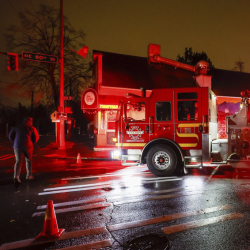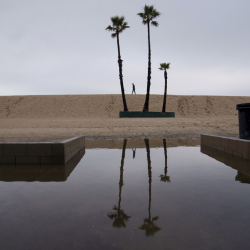
In 1787, a printer, a lawyer, a cleric, several merchants and a musician gathered in a London bookshop to pursue a seemingly impossible goal: ending slavery in the largest empire on earth.
In "Bury the Chains: Prophets and Rebels in the Fight to Free an Empire's Slaves" (Houghton Mifflin paperback, $16), author Adam Hochschild crafts a taut, thrilling account of their fight. Their crusade soon became one of the most brilliantly organized citizens' movements of all time and resulted in the freeing of hundreds of thousands of slaves around the world.
At this point in the 18th century, anyone who advocated ending slavery in the British empire was regarded as either crazy or hopelessly idealistic. Slave labor in the British West Indies, for instance, had turned sugar from a rare luxury for the wealthy into something found on millions of European dinner tables. British ships dominated the slave trade, carrying roughly half of the African captives who crossed the Atlantic.
Previous attempts to counter this huge and powerful industry by starting an antislavery movement had gone nowhere. As Hochschild writes, "A latent feeling was in the air, but an intellectual undercurrent disapproving of slavery was something very different from the belief that anything could ever be done about it. An analogy today might be how some people think about automobiles."
But led by Granville Sharp, a prominent musician and self-taught lawyer, this group of men combined fiery devotion with cool practicality. Along the way, they perfected most of the tools activists still rely on today, from posters and mass mailings to boycotts and lapel pins.
Britons began discussing slavery in London debating societies, provincial pubs, urban coffeehouses and their homes. Antislavery pieces were published in books, newspapers and pamphlets. "Few countries in any age," Hochschild notes, "have seen such a movement of such scope erupt so suddenly."
Within five years, this handful of men spawned antislavery committees in every major town and city in the British Isles; more than 300,000 Britons were boycotting the chief slave-grown product, sugar, and the House of Commons had passed the first law banning the slave trade.
The House of Lords, salted with slave owners, refused to pass the bill banning the slave trade, so at its peak this pioneering human rights movement seemed about to die. But the movement's leaders masterfully stoked public opinion over the following decades, lifting to celebrity status such striking personalities as Olaudah Equiano, an eloquent ex-slave who embarked on the first true book tour (promoting his autobiography) and a divinity student named Thomas Clarkson, who became one of the first great investigative journalists.
Britain finally banned the slave trade in 1807, and slavery itself came to an end in the empire in the 1830s, long before it did in the United States. There were parades and celebrations in the British Caribbean on the day of victory, Aug. 1, 1838. In the yard of one Jamaican church at the stroke of midnight, a Baptist missionary named William Knibb and his congregation placed an iron collar, a whip and chains in a coffin and inscribed on it: "Colonial Slavery, died July 31st, 1838, aged 276 years."
"Bury the Chains" is a potent reminder of how a strong social movement and a devoted few can awaken a nation's conscience and change history.




















































































































































































































































































































































